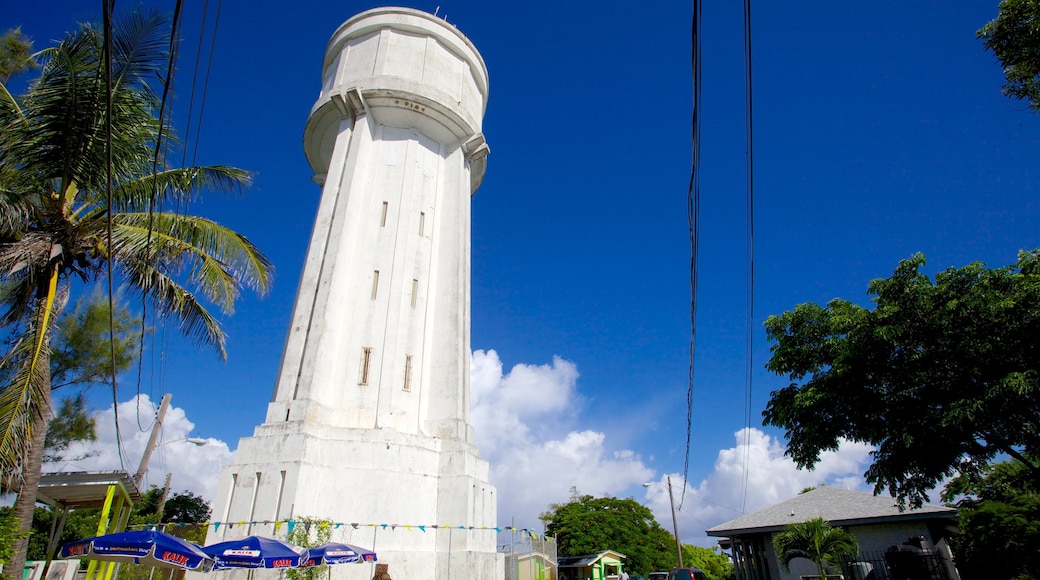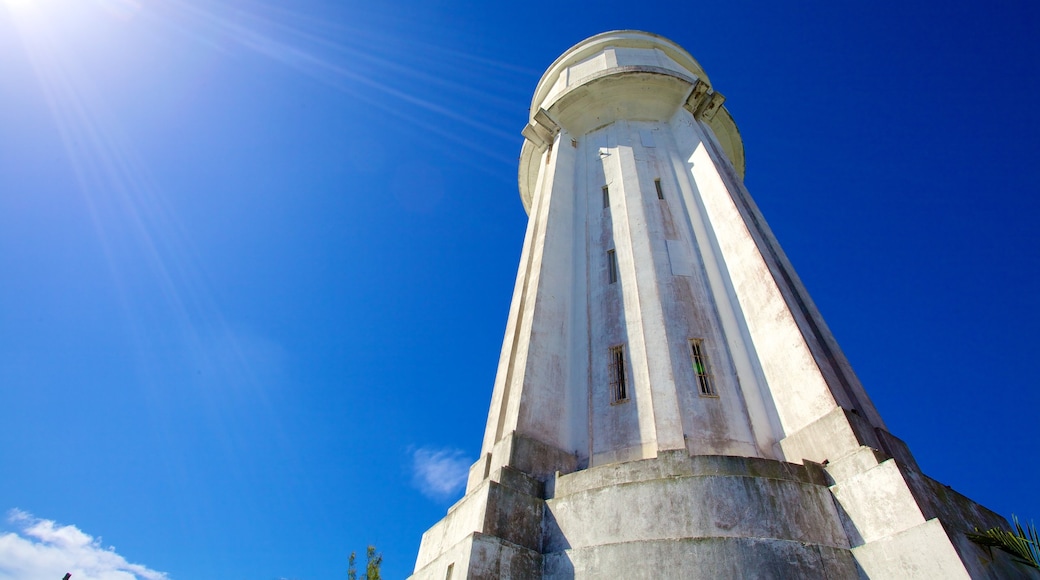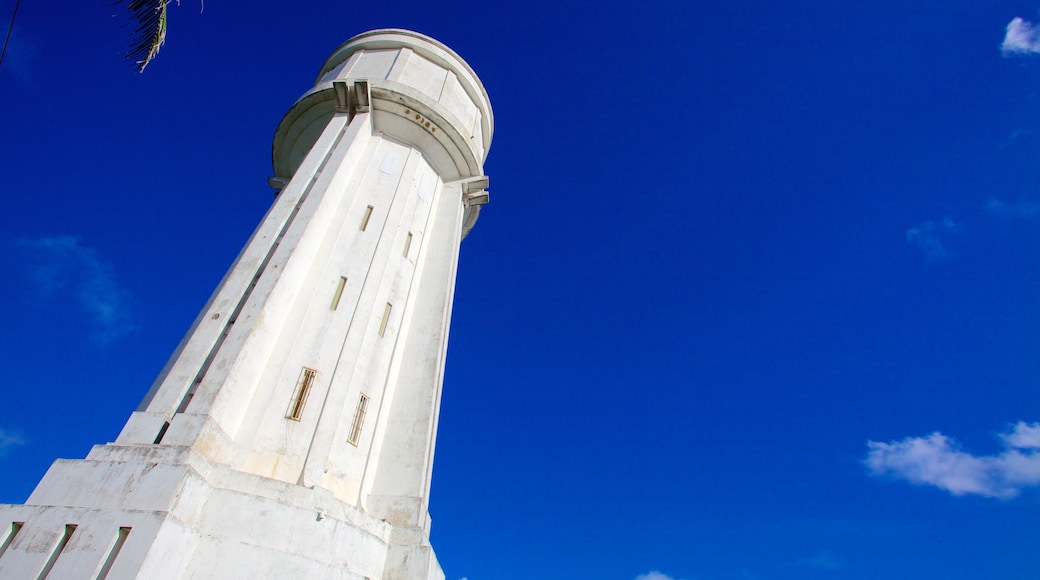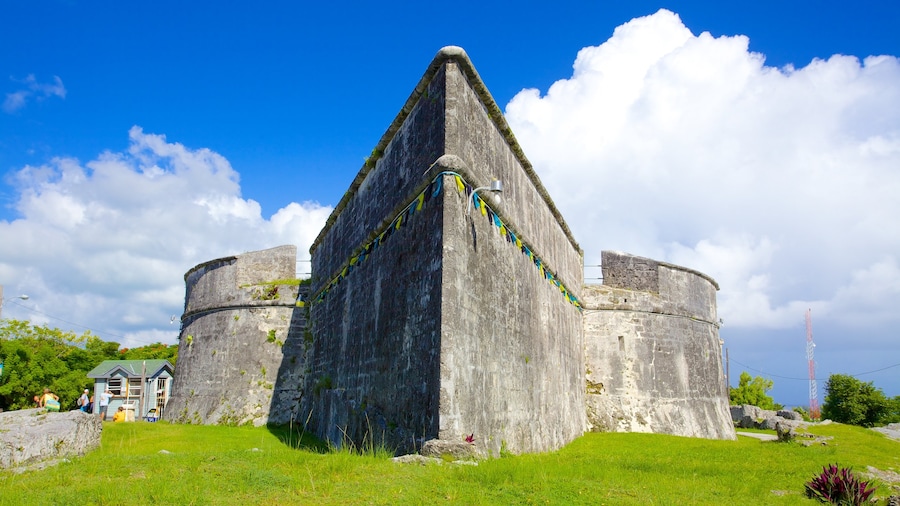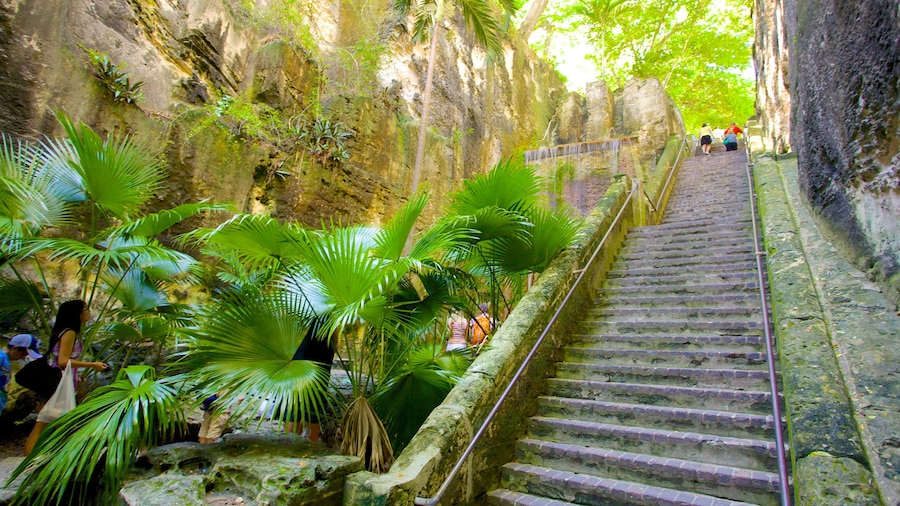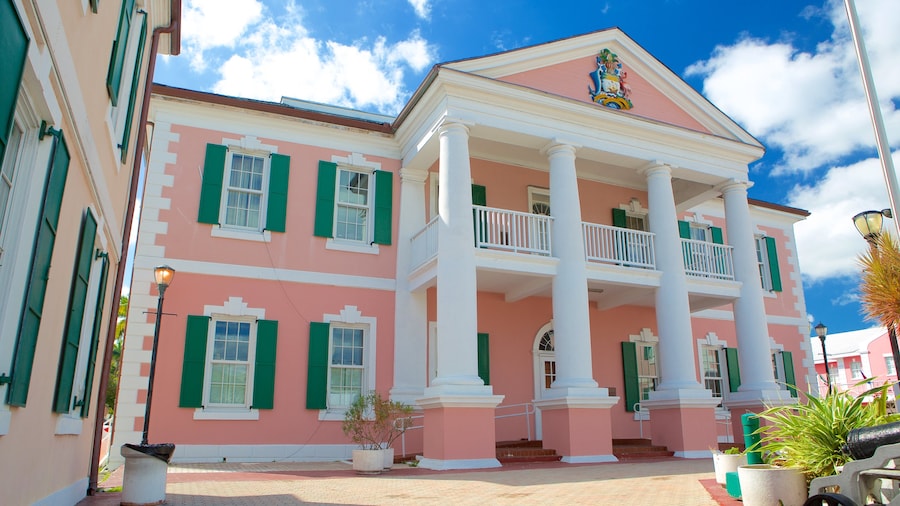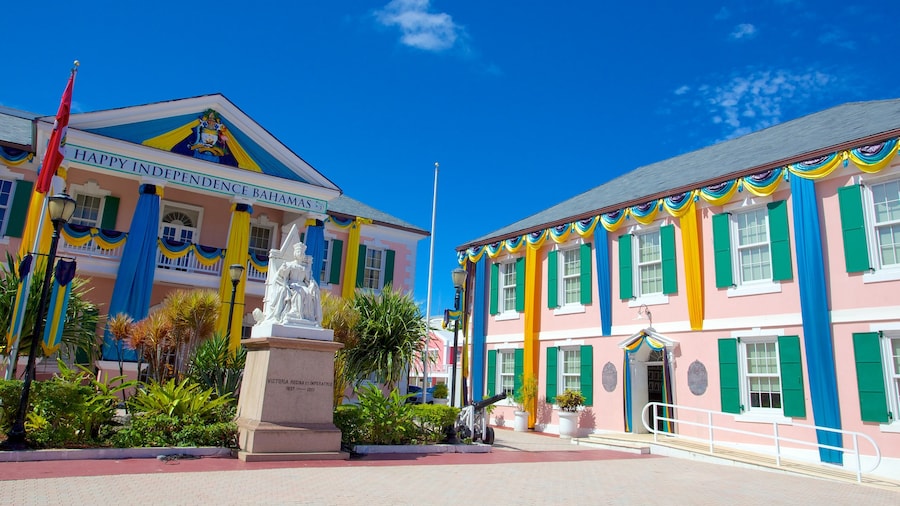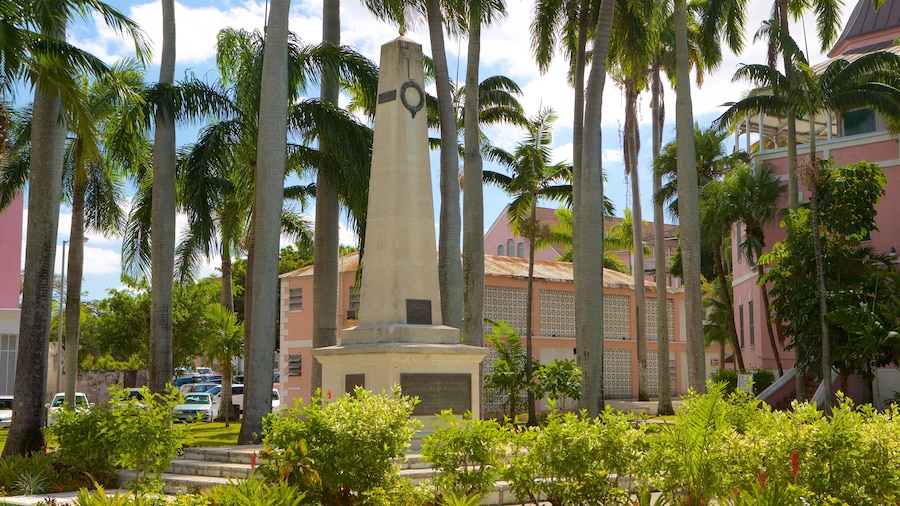Admire views from the hill supporting this tower, said to be the highest point in New Providence. Explore the fascinating historic attractions that surround it.
Nassau’s Water Tower stands 126 feet (38 metres) tall on a hill providing fantastic panoramic views over Nassau. The tower area is best reached by ascending the striking Queen's Staircase, one of the island’s oldest attractions. After taking a moment to enjoy the views, explore the neighboring Fort Fincastle, which houses interesting old cannons.
The Water Tower was built in 1928 to hold water for the island. It’s said that the tower was built using funds donated by the United States as repayment for Nassau’s help in storing illegal liquor during Prohibition. Note the unusual feature for a water tower of an enclosed base. Although the tower is closed for renovation, inside is a winding 216-step staircase to the top of the tower.
Approach the tower by ascending the Queen’s Staircase, which is located just to the north. One of Nassau’s most famous attractions, the staircase was built by slaves in the late 18th century. Consisting of 66 steps and stretching for 102 feet (31 metres), the staircase was carved from solid limestone by slaves. It was later renamed in honour of Queen Victoria and her role in helping to abolish slavery in the Bahamas, making it an important cultural icon of the country.
Stop at the 18th-century Fort Fincastle, which stands adjacent to the tower and overlooks the town from Bennet’s Hill. This small fort was constructed by royal governor Lord Dunmore in order to protect the island from attacks by the Spanish, although its cannons ultimately never needed to be fired. The fort was designed to resemble a paddlewheel steamboat. Explore several rooms beneath the lookout point and climb to the top of the fort to see its collection of historic cannons.
Find the Water Tower behind Fort Fincastle at the top of Elizabeth Avenue. Walk here from most areas in Nassau or take the local bus. Visit the shopping huts near the base of the tower.

